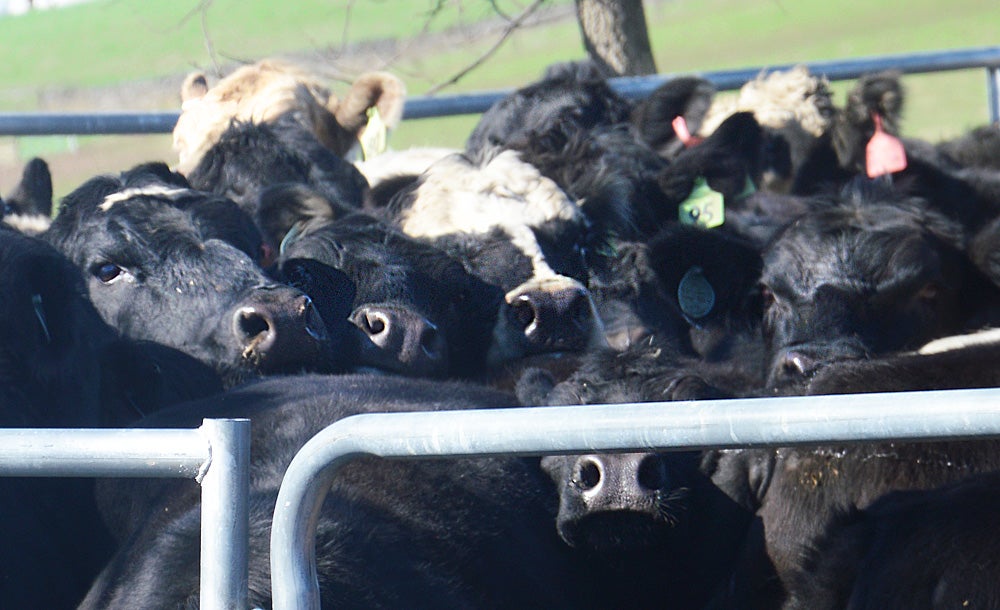Finding land is last barrier to dead animal removal solution in Boyle County
Published 5:44 pm Monday, March 2, 2020

- A few faces of the Angus cattle are watching the excitement in the corral off of Lancaster Road. (File photo by Robin Hart)
The Boyle County Soil Conservation District is so serious about quickly finding a solution for the county’s dead livestock disposal problem that it’s already purchased a specialized truck; has $200,000 worth of solid waste grant applications ready to send; and has a plan for composting carcasses. All it needs is approval from fiscal court and about three acres of land.
There are 16 other counties scrambling to find solutions to the same problem. The region lost its main provider for dead animal removal services when Bluegrass Recycling and Animal Removal closed at the end of January. Those other counties will be seeking the same grant funding, too.
“We just have to be the first in line,” said conservation district board member Patrick Horn.
One of the district’s programs is to offer the free service of carcass removal and disposal for farmers, Horn said. The district also works to improve soil conservation and water quality. The plan they believe will be most cost-effective, sustainable and environmentally protective is composting of dead animals, Horn said.
Having farmers dump their dead animals over a hillside creates more of an environmental hazard than composting, if done correctly, he said.
Horn, along with Danny Lay and other board members, recently toured the Franklin County Livestock Compost Program, which began in 2016. According to papers that Franklin County shared with the Boyle district, “The program was developed in an effort to improve environmental health, water quality and landfill diversion in Franklin County.”
Horn said composting locally would save the district money over the years.
According to Franklin County’s information, based on research from Dr. Steve Higgins at the University of Kentucky and student research data, a compost system “utilizes a compacted, impervious surface gravel pit, lined with concrete pavers and soil berms. Animal carcasses are placed on a 2- to 3-foot-deep bed of wood chips and covered completely with an additional 2 to 4 feet of wood chip material.
Horn said the smell would be similar to what you smell when walking by a pile of mulch. And because the carcasses are buried deep under organic matter, there wouldn’t be problems with flies, buzzards nor runoff. After about six to nine weeks, depending on the weather and temperatures, only a few of the larger bones would remain. Another benefit is that what’s left over is fantastic, organic fertilizer, which farmers could use on their fields, Horn said.
Once the initial financial outlay for a front end loader and the site is prepared, the cost to the district would be for one employee to operate the truck and bury the animals.
There would be no cost for wood chips because the city and county road departments, residents and area tree services could use a portion of the site to dump, leaves, brush and tree limbs, Horn said, which could be chipped up and used for compost.
Lay said last year, Boyle County spent about $55,000 with Bluegrass Recycling for picking up about 2,300 dead livestock at $23 each. They found two other vendors who would charge the district $82.50 and $90 per head, Lay said.
Incineration was another option the district researched, but it was cost-prohibitive. It showed the district would have to purchase four incinerators, with four smoke stacks and would need four employees to run the operation. Plus it would cost about $200 in diesel fuel in incinerate a 1,000 pound animal, Lay said.
Or, the county could pay a driver to pick up the animals, drive to and from the Lincoln County landfill and pay $70 a ton, which comes out to about $53,000 annually.
Horn said all the district needs now to start a composting program is “land and cooperation of the government.”
SO YOU KNOW
The Boyle County Solid Waste Committee will meet at 10 a.m. today at the Boyle County Courthouse; the meeting is also a special called meeting of the Boyle County Fiscal Court, which will be meeting with members of the conservation district board to discuss the current issues with dead animal removal.






